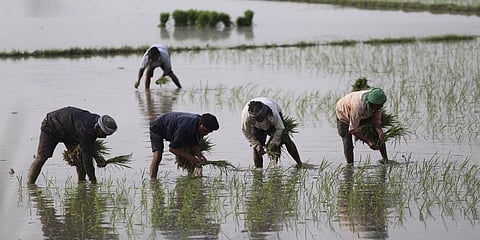

NEW DELHI: Farmer protests in India have registered an almost five-fold increase since 2017. From 34 major protests across 15 states in 2017, the number has now gone up to 165 protests across 22 states and Union territories.
Every day, over 28 farm labourers and cultivators commit suicide in our country. In 2019, there were 5,957 farmer suicides, along with an additional 4,324 farm labourers who died by suicide, according to the State of India’s Environment in Figures 2021.
Today, India has more farm labourers than farmers – in 52 per cent of the country’s districts, the population of farm labourers has outstripped that of farmers and cultivators. Bihar, Kerala and Puducherry have more farm labourers than farmers in all their districts.
These statistics points that India is sitting atop a massive time-bomb of agrarian crisis and disquiet, and the clock is ticking away.
CSE director general Sunita Narain said: “There is drama in numbers, especially when these numbers give you a trend – are things getting better or worse. It is even more powerful when you can use the trend to understand the crisis, the challenge and the opportunity.”
In the case of agriculture and land, things seem to be certainly on the downside.
“This is evident all the more when you see the condition of land records and their maintenance in the country. Our analysis shows that 14 states in India have witnessed a deterioration in the quality of their land records," says Richard Mahapatra, managing editor of Down To Earth.
According to Narain, “at a time and age when the quality of data available to us is usually poor – it is either missing, unavailable publicly or of questionable quality – a collection like this can be immensely helpful, especially for journalists. Improving the quality of data can only happen when we use it for policy.”